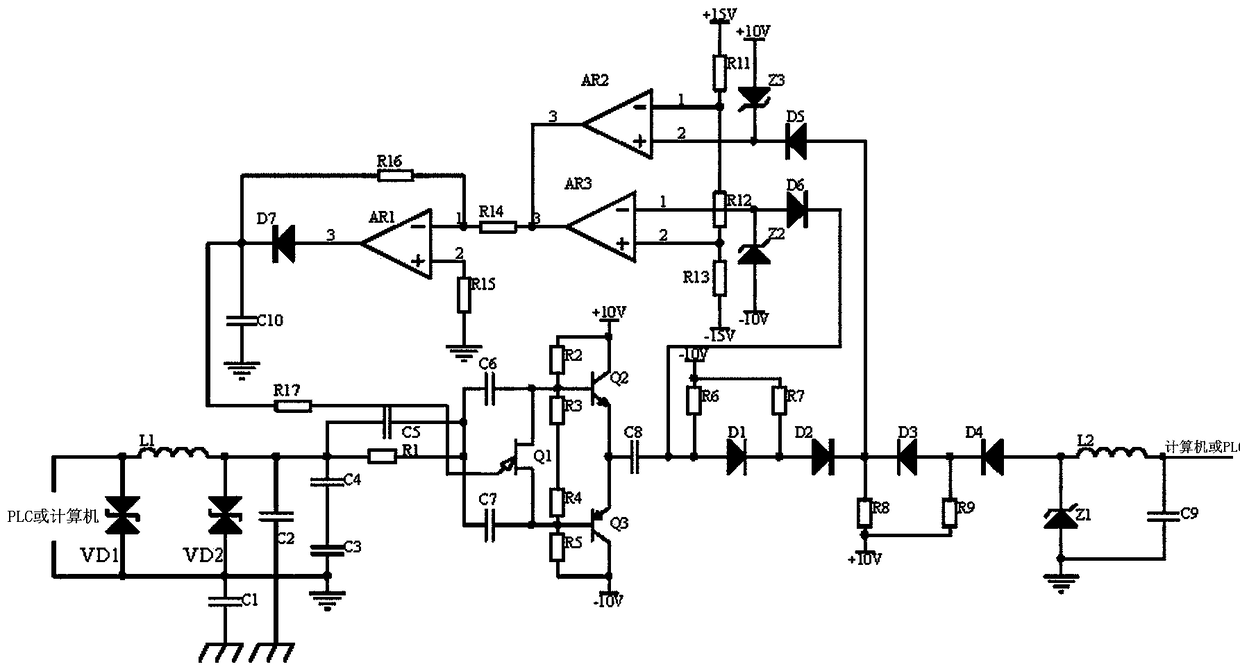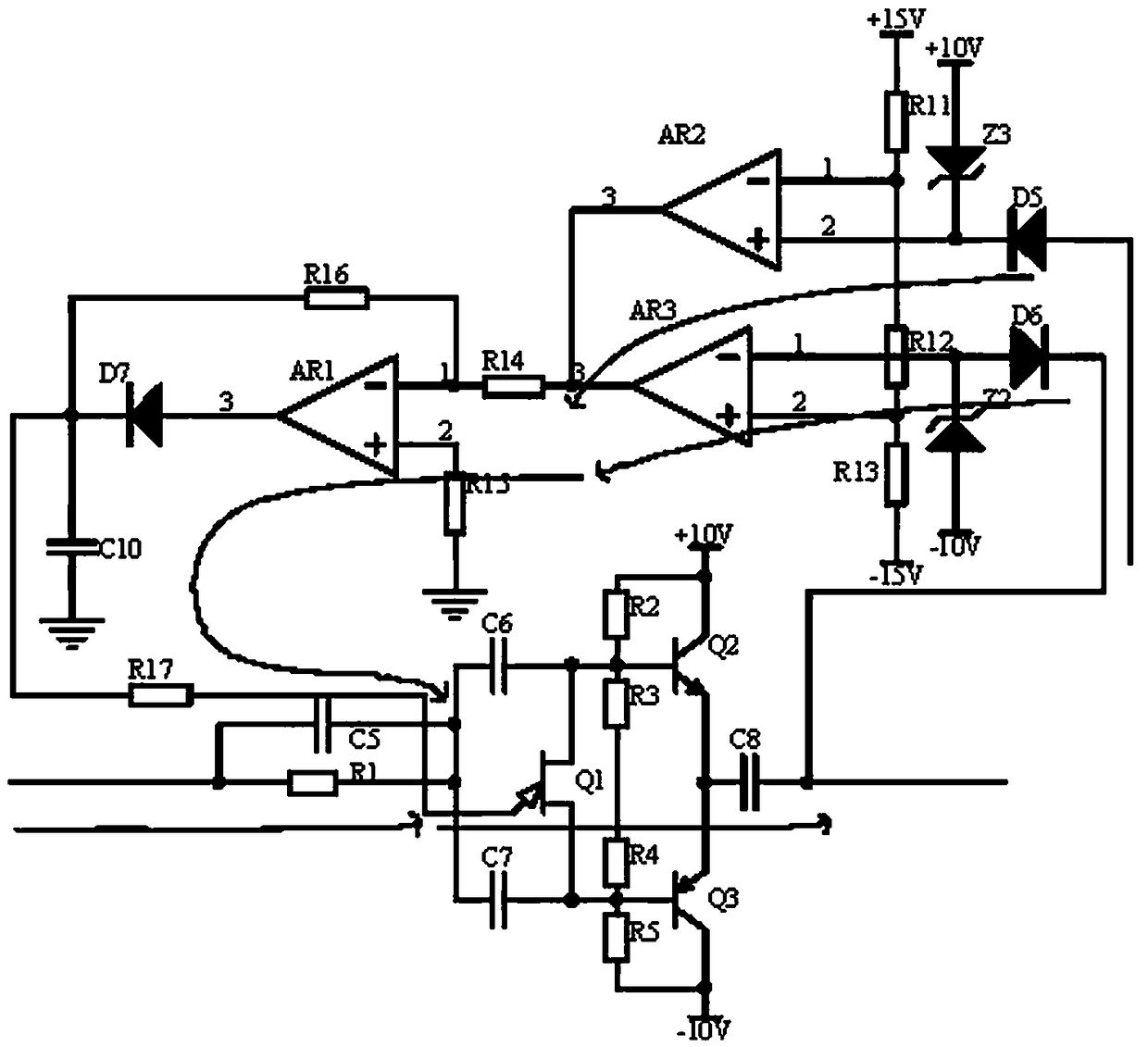Control system for tension tester
A tensile testing machine and control system technology, applied in electrical program control, program control in sequence/logic controller, measurement device and other directions, can solve the problems of signal distortion tensile testing machine testing accuracy, etc. Accuracy, simple circuit structure effect
- Summary
- Abstract
- Description
- Claims
- Application Information
AI Technical Summary
Problems solved by technology
Method used
Image
Examples
Embodiment 1
[0016] Embodiment 1, a tensile testing machine control system, including sensors, PLC, servo system, computer, the PLC output control signal to the servo system, the servo system provides power to drive the tensile mechanism of the tensile testing machine, etc. to carry out various materials Mechanical performance tests (such as tension, compression, bending, shearing, tearing, peeling, etc.); the sensor converts the signal when the tensile testing machine performs mechanical performance tests on various materials into electrical signals (such as the load cell will The tensile force borne by the material is converted into an electrical signal), which is transmitted to the PLC as a feedback quantity; the PLC and the computer communicate with each other to realize human-computer interaction, specifically, the human outputs the control signal to the PLC through the computer, and the PLC outputs the control signal to make the tensile testing machine perform mechanical testing. In t...
Embodiment 2
[0018]Embodiment 2, on the basis of Embodiment 1, the signal enhancement circuit receives the output signal of the interference suppression circuit, and the corner frequency generated by the RC parallel circuit composed of the resistor R1 and the capacitor C5 only allows the frequency component of the output signal of the interference suppression circuit Through the capacitors C6 and C7, they are respectively coupled to the base of the complementary amplifier composed of the transistor Q2 and the transistor Q3, wherein the resistor R2-resistor R4 provides the bias voltage for the complementary amplifier, and the complementary amplifier is amplified and then output through the capacitor C8. In order to make the amplification After meeting the requirements of the signal amplitude, the difference signal is output by the dual comparator with operational amplifier AR2 and operational amplifier AR3 as the core. The conduction angle of the unijunction transistor Q1 is used to adjust t...
Embodiment 3
[0019] Embodiment 3, on the basis of Embodiment 2, the isolated output circuit uses diode D1 in series with diode D2 to isolate the passage of interference signals below -10V, and diode D3 in series with diode D4 to isolate the passage of interference signals above +10V, which allows the amplitude When the useful signal of -10V-+10V passes through, the noise interference that does not overlap in time is suppressed, and finally the LC filter circuit composed of the voltage regulator Z1, the inductor L2 and the capacitor C9 filters the undisturbed and meets the signal amplitude. The stable and stable signal is transmitted to the computer or PLC, wherein resistor R6-resistor R9 is a pull-up resistor, including diode D1, resistor R6, the positive pole of diode D1 and one end of resistor R6 are connected to the output signal of the signal enhancement circuit, and the negative pole of diode D1 Connect the anode of diode D2 and one end of resistor R7 respectively, the other end of res...
PUM
 Login to View More
Login to View More Abstract
Description
Claims
Application Information
 Login to View More
Login to View More - R&D
- Intellectual Property
- Life Sciences
- Materials
- Tech Scout
- Unparalleled Data Quality
- Higher Quality Content
- 60% Fewer Hallucinations
Browse by: Latest US Patents, China's latest patents, Technical Efficacy Thesaurus, Application Domain, Technology Topic, Popular Technical Reports.
© 2025 PatSnap. All rights reserved.Legal|Privacy policy|Modern Slavery Act Transparency Statement|Sitemap|About US| Contact US: help@patsnap.com



